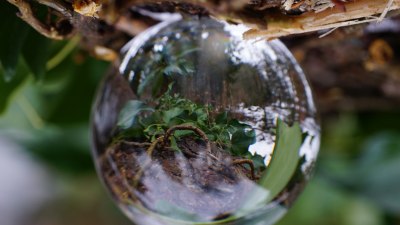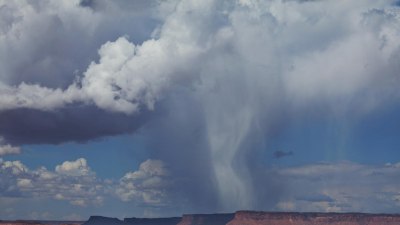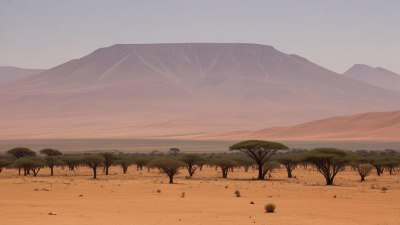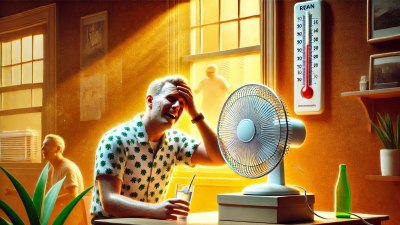What Causes Microclimates in Small Areas
Explore the factors that cause microclimates in small areas, including geography, vegetation, and human activities, and their environmental impact.

Microclimates refer to the distinctive climate conditions experienced in a small, specific area that differ from the surrounding broader region. These localized climate variants can influence temperature, humidity, wind, and precipitation, creating unique environments within short distances. Understanding what causes microclimates in small areas involves exploring a combination of natural and human-made factors that modify the atmosphere on a localized scale. These causes vary widely depending on geographic location, terrain, vegetation, water bodies, and urban development.
Geographical Features and Terrain
One of the primary contributors to microclimates is the local geography and terrain. Features such as hills, valleys, slopes, and elevation changes have a significant influence on temperature and moisture levels. For example, valleys often experience cooler temperatures at night due to cold air settling at lower elevations. This process, called temperature inversion, can create frost pockets detrimental to certain plants but beneficial for others that thrive in cooler conditions.
Slopes that face the sun (south-facing slopes in the northern hemisphere and north-facing slopes in the southern hemisphere) receive more solar radiation, resulting in warmer and drier conditions compared to their shaded counterparts. As a result, vegetation on different slopes may vary drastically, further reinforcing the microclimate niche.
Elevation itself affects climate because temperature generally decreases with height at approximately 6.5 degrees Celsius per 1000 meters. Mountains can create rain shadows, where one side receives ample rainfall while the leeward side remains dry, establishing distinct microclimates over relatively short distances.
Water Bodies and Their Influence
Proximity to water bodies such as rivers, lakes, ponds, and oceans significantly influences local climate conditions. Water has a higher specific heat capacity than land, which means it heats and cools more slowly. This causes coastal and lakeside areas to experience milder temperatures, with warmer winters and cooler summers compared to inland areas. This moderation of temperatures is a common driver of microclimates.
The presence of bodies of water also affects humidity levels. Evaporation from the water surface increases local humidity, which can influence cloud formation and precipitation patterns. Small ponds or urban water features can create localized humidity spikes that affect nearby vegetation and comfort levels for humans and animals alike.
Additionally, the phenomenon of lake effect snow, where cold air moves over a relatively warm lake, often creates heavy localized snowfall downwind of the water body. This is a classic example of a microclimate caused by the interaction between air masses and water bodies on a small scale.
Vegetation and Land Cover
Vegetation plays a crucial role in establishing microclimatic conditions. Areas covered by forests, grasslands, or crops often have different temperature, humidity, and wind patterns than barren or urbanized regions. Trees provide shade, reducing ground temperatures during the day, and also release water vapor through transpiration, increasing local humidity. This can lead to cooler and more humid conditions under forest canopies compared to exposed fields.
Vegetation also influences wind patterns by acting as a barrier or windbreak. This protection can reduce wind speed, which may help retain heat and moisture, especially in colder climates. Moreover, areas with dense vegetation often have thicker organic soil layers that retain moisture better, contributing to localized differences in water availability and temperature regulation.
In agricultural settings, varying crop types and planting patterns can create microclimates that affect growth rates and pest activity. Farmers often leverage this knowledge for crop placement and management to optimize yield.
Urbanization and Human Activities
Urban areas are well-known for producing microclimates commonly referred to as urban heat islands. In cities, a high density of buildings, roads, and other infrastructure absorbs and retains heat during the day and slowly releases it at night, resulting in elevated nighttime temperatures compared to surrounding rural areas. This can exacerbate summer heatwaves and increase energy demands for cooling.
The materials used in urban construction—such as concrete, asphalt, and metal—have different thermal properties than natural land covers, leading to greater heat absorption. The lack of vegetation reduces shading and transpiration cooling effects, further enhancing heat retention.
Additionally, human activities such as industrial processes, vehicle emissions, and air conditioning units contribute to localized warming and pollution. These factors combined create a complex microclimate that affects air quality, weather patterns, and human health.
Urban planners and environmentalists increasingly focus on mitigating these effects by incorporating green roofs, urban forests, and reflective surfaces to reduce heat buildup and improve local microclimates.
Soil Composition and Moisture
Soil type and moisture levels significantly contribute to microclimatic variation. Soil with high clay content retains water better but may become cooler due to evaporation, whereas sandy soils drain quickly and tend to warm faster under sunlight. Moist soils have a cooling effect on the immediate environment through the process of evaporation, which consumes heat energy and thus lowers temperatures.
The water retention ability of soil influences vegetation growth and the local humidity, indirectly shaping microclimate conditions. Areas with poor soil water retention may experience hotter daytime temperatures because of reduced evaporative cooling, whereas moist soil supports cooler, more humid microenvironments.
Wind Patterns and Airflow
Local wind flow is another key factor influencing microclimates. Wind moving through narrow corridors such as streets, mountain passes, or between buildings can accelerate due to funneling effects, leading to localized cooling or drying. Conversely, sheltered areas shielded from prevailing winds often experience warmer and more humid conditions due to reduced air movement.
At a small scale, the presence of trees and structures can create eddies or calm zones, causing variation in temperature and humidity levels within short distances. These conditions can impact seed dispersal, insect activity, and microhabitats for various species.
Human-Induced Modifications Beyond Urban Areas
Apart from urban heat islands, other human activities contribute to microclimates in rural and natural settings. Examples include agricultural irrigation, which increases soil moisture and local humidity, and land clearing that changes surface reflectivity and heat absorption.
Deforestation reduces shade and transpiration cooling, leading to hotter and drier microclimates. Conversely, reforestation and afforestation projects can create cooler, moister conditions in previously degraded landscapes.
Small-scale structures such as greenhouses, walls, and fences can modify wind and shade patterns, artificially creating microclimates suitable for particular crops or plant species. This manipulation allows growers to extend growing seasons or protect plants from frost and wind damage.
The Role of Aspect and Exposure
Aspect—the directional orientation of a slope—greatly affects microclimate. South-facing slopes in the northern hemisphere receive more direct sunlight, making them warmer and drier than north-facing slopes, which are generally cooler and moister due to less sun exposure. This difference influences vegetation types and soil moisture, often creating distinct ecosystems side by side.
Similarly, exposure to prevailing winds or protection from them modifies temperature and humidity patterns. Windward slopes may experience more precipitation and cooler temperatures, while leeward slopes tend to be warmer and drier, shaping unique micro environments even within small landscapes.
Topographic Barriers and Microclimates
Ridge tops and mountain barriers often play a role in modifying airflow and precipitation distribution, leading to microclimates. Air masses forced to rise over these obstacles cool and condense moisture, causing heavier precipitation on windward sides and creating drier conditions—the rain shadow effect—on the leeward side.
This mechanism results in sharp transitions between wet and dry microclimates in relatively short distances, influencing local flora and fauna distributions as well as human land use.
Natural Events and Seasonal Influences
Seasonal changes can emphasize or reduce microclimatic differences. For example, snow cover insulates the ground and reflects solar radiation, making microclimates under forest canopies relatively warmer during winter nights compared to open areas. Similarly, intense rainstorms or droughts can alter soil moisture and vegetation cover, temporarily modifying microclimate conditions.
Frost formation is often influenced by microclimates, with cold air pooling in depressions or low-lying areas creating frost pockets that affect plant survival and agriculture. Microclimate knowledge is crucial for farmers aiming to reduce crop damage due to unexpected cold spells.
Monitoring and Mapping Microclimates
Advances in technology such as remote sensing, geographic information systems (GIS), and portable weather stations have made it easier to detect and analyze microclimates. High-resolution temperature and humidity sensors placed strategically across small areas reveal significant climatic differences that traditional regional weather stations might overlook.
Mapping these microclimates allows scientists, urban planners, and farmers to make informed decisions about land use, crop selection, building placement, and environmental conservation strategies. These efforts help enhance sustainability and adapt to climate change challenges.
Impact of Microclimates on Biodiversity and Agriculture
Microclimates create niches that support diverse plant and animal species by offering varied conditions within close proximity. Certain species specialize in habitats shaped by microclimatic factors, enhancing regional biodiversity. For example, moist shaded valleys may harbor species unable to survive on the dry exposed ridge tops nearby.
In agriculture, microclimate manipulation enables the cultivation of crops outside their typical climatic zones, improving food security and extending growing seasons. Techniques such as row orientation, shelterbelt planting, and strategic irrigation optimize microclimates to maximize crop health and yields.
Adaptation and Management Strategies
Understanding the causes of microclimates is essential for adapting to changing climate conditions and mitigating adverse effects. Management strategies include increasing urban green spaces to cool heat islands, using mulches and cover crops to maintain soil moisture, and designing landscape features that enhance beneficial microclimates for agriculture and wildlife.
Additionally, architects incorporate passive solar design and natural ventilation to take advantage of site-specific microclimates, reducing energy consumption and improving occupant comfort.
Effective microclimate management balances ecological health, human needs, and climate resilience, promoting sustainable environments in small geographic areas.
In summary, microclimates in small areas arise from a mixture of geographical, environmental, and human factors. Terrain, water bodies, vegetation, urban development, soil, wind patterns, and seasonal changes interact to create localized climates distinct from their surroundings. Recognizing these causes helps unlock new opportunities for environmental stewardship, agriculture, and urban planning.











